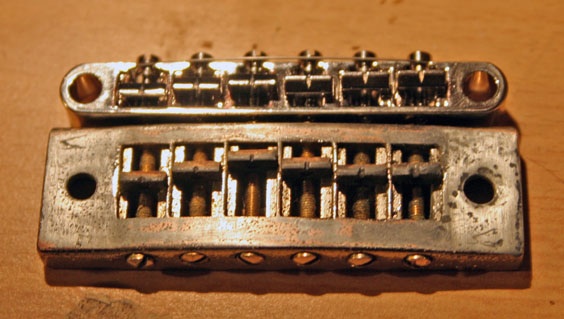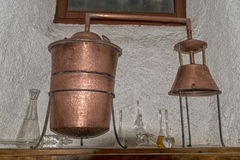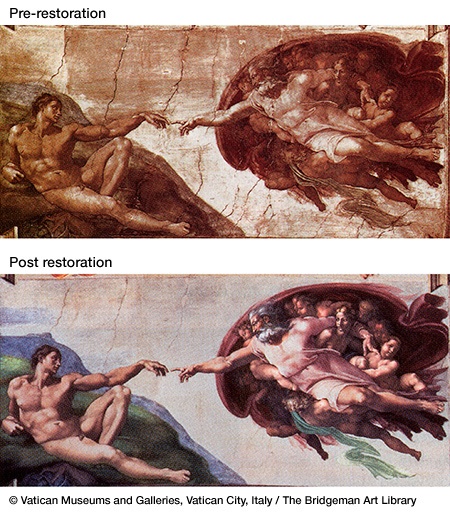I'm a repairman. Here's my hard-earned motto:
IF YOU CAN'T TELL WHAT I DID, THEN I DID IT RIGHT.
As a musician or collector (or pack rat, as in my case), I hope you agree with the sentiment. That's what you want to hear a repairman say before he even opens your case, right?
And I learned this invaluable lesson on other people's instruments. Can you feel me now?
Full disclosure: my first bass was a 1962 Fender Precision bass my dad bought from a guy for fifty bucks in 1967. It had the rare four-color sunburst paint job, and whoever painted it was a Michelangelo. The colors blended so exquisitely that it was impossible to detect the layers. I spent hour and hours staring into it when I was a boy, when I'd put it on and couldn't even reach that darn F.
When I was 13 I saw a picture of Paul McCartney playing a natural finish Rickenbacker and immediately stripped the finish off my bass and slapped about three coats of Flecto-Varathane on it.
Boy, I'm glad I just blurted my confession and got it over with. That's like 'fessing up to peeing on the Alamo while wearing a dress, which Ozzy Osbourne had to admit to, in open court.
In. Texas.
I've lived with the memory of my utterly brainless act ever since, even after some junky stole that bass during a break at a gig in Seattle in 1983. It haunts me, especially because nearly every day I open a case and see some similar atrocity performed on an innocent instrument by well-meaning sufferers of temporary insanity.
But I understand it, down in the lizard-brain part of my limbic system: ooh, shiny! Corky likes! Pretty!
When it comes to the oh my god, what have you done? Awards, I claim the title. Even in the special married men category, reserved for those of us with live-in judges.
My penance is to educate, as many an elementary school teacher has muttered to themselves every morning. So I turn to the masters; Michelangelo. Cellini (
https://newtopiamagazine.files.wordpress.com/2012/03/cellini-salt-cellar.png ) Tiffany, without whom a whole generation of girls would be named something else. Alembic.
So I must apologize for so casually throwing the boiling-water-with-baking-soda thing out there, even though I warned that it's a last resort (I didn't tell anybody the REAL last resort, which I've only used once).
Don't do it. It's for rusty truck bumpers. Stuff you bring home from the junkyard and tell the wife; I saved fifty bucks! So let me reel this thing back in a little, before somebody fires up their tea kettle and breaks out the Arm & Hammer and takes a wire brush to their Series II.
There's a big difference between tarnish and corrosion. Tarnish mostly comes from the air, corrosion from skin contact or exposure to moisture and sulfurous drummer-based gases in the air.
This is corrosion on a Les Paul:

This is tarnish on an Alembic:

(Congratulations if you got that. I'll take 'smug pedantry' for $200, Alex!)
The best ways I've found to deal with tarnish is a little baking soda paste with just a drop or two of water on a soft cloth. 99% of the time that's all it takes, and you don't even have to grind away at it.
The next level - the tailpiece on Echo's bass for instance - is the softest pencil eraser you can find. Those gummy white blob kind that are all the rage in the back to school section of your local mega-mart. (Not the pink ones.)
You WANT the eraser to basically fall apart, because all you're going for is to remove the surface layer on the lacquer, not obliterate the lacquer itself. Just gently roll it, extra points for dabbing. You'll know if you have to bear down and rub a little.
Remember that the ceiling of the Sistine Chapel was cleaned primarily with distilled water sprayed lightly onto tissue paper, allowed to soak a moment and gently lifted off:

(Conspiracy theorists: note the god/brain
http://www.thecaveonline.com/APEH/michelangelosbrain.html )
That's what you're shooting for, especially with chrome. That's what you're looking at every time you open the case and look at your Alembic. You lucky bastard. !
On an Alembic, you should never have to remove the lacquer at all. Lacquer is made to shine, and a soft cloth is your paintbrush. When something shines, it's because light reflects evenly off it.
Frankly, if you have to replate parts, take it to a jeweler. I've never met one who wasn't intrigued and flattered (and believe me, cultivating a relationship with a jeweler is always a good idea). They've always cut me a break on price, just because I asked. It's an Alembic. It's YOUR Alembic.
Take an angle grinder to your Fender or Gibson bass all you want (in fact, I'll do it for free on the Gibson), but treat your Alembic like your baby. Except it cries in a much lower register.
Now, about Pledge. Not Lemon Pledge. I'm going to do an experiment. Here's my Dad's guitar.
https://imageshack.com/i/id6W6Pm3j It's been in the corner of my studio in what I call me time out corner for about fifteen years.
https://imageshack.com/i/eyYyuuMEj My dad made those scratches with his belt buckle, in spite of my constant suggestion to wear his belt Monkees style, with the buckle on the side. Apparently, that's for an oblique reference to a bunch of cats.
The guitar was made for him as a gift by Emil Dopera. The scratches stay.
https://imageshack.com/i/p1Alwolxj Questions?